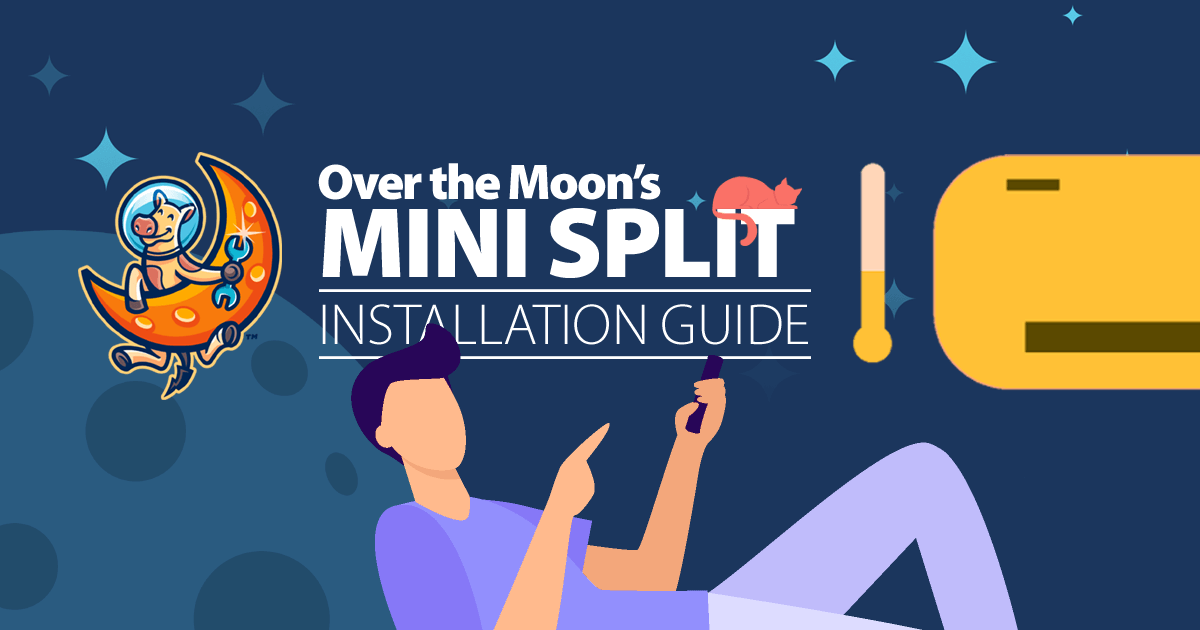Customers throughout our service area trust us for mini split installation. Ductless mini-split systems provide both heating and cooling, are efficient, and are less costly to operate than other HVAC systems. Air handlers are installed in each room, so homeowners are often uncertain about the installation process. The air handlers usually fit seamlessly with interior décor. We will cover various aspects of the installation here, from placement to how components are installed inside and outside your home.
What Is a Mini-Split System?
A mini-split AC system uses heat pump technology to heat and cool your home. The main difference over other systems is it does not require ductwork. Connected to an outdoor compressor by refrigerant lines, each indoor unit can be controlled independently, creating a zoning effect without straining the system. You can choose the best temperature for your living room, bedroom, home office, or garage without affecting the comfort of others in your household.
Types of Mini-Split Systems
Before you install a mini-split, you must choose the best system for your home. The options to consider include:
- Single Zone: Heat or cool one room or area and have just one air handler or condenser unit.
- Dual Zone: Are configured to heat/cool two areas; the system has two air handlers connected to one condenser unit.
- Multi-Zone: Multiple air handlers are connected to a single condenser unit to heat or cool different areas separately.
Also consider the number of British thermal units, or BTUs, best suited for your home, and make sure there’s a power source to run to the system. Small systems can work with 20-amp circuits. However, larger ones may require separate higher power circuits, such as 220-volt lines run from the breaker panel to a disconnect switch, then to a switch on the unit.
Placement
When installing a mini-split system, indoor units can only be installed on exterior walls. The air handler must also be placed where air will be distributed equally throughout the room, ideally seven feet above the ground and as close to the ceiling as possible. In bedrooms, units should be placed above the bed or on a wall opposite your feet. Also make sure to install indoor units out of direct sunlight, not near a heat source, and away from furniture, electronic devices, and other objects so temperature readings aren’t affected. The same goes for outdoor units, which also must be kept away from vegetation or soft ground.
Installing an Outdoor Unit
The condenser should rest on a solid surface. You can purchase a plastic condenser pad to place it on or pour a concrete pad. Once you choose a location, you need to secure the unit to the pad and then connect the pipes and tubing that will serve the indoor unit(s). If using pre-charged lines, do not cut them as the refrigerant can injure you. Follow the manufacturer’s instructions in connecting the lines; you’ll likely need a wrench and torque wrench to do so, but if lines must be cut and then charged, it’s best to hire a professional.
Wires and tubing should be attached directly to the exterior wall and protected by a cover. At the back of the outdoor unit, connect a pipe joint to the line set. The joint must be the correct type and size. The multi-conductor wiring running to the indoor unit is connected next using a torque wrench. Whether you have done most of the work yourself or a technician helped, the system will need to be fully inspected.
Installing an Indoor Unit
Choose an open area where to install the unit. Make sure there are no obstructions or heat sources nearby. Locate the studs in the wall, mark their location, and then:
- Install the mounting bracket in a location where there are no wires, pipes, or ducts, and fasten the bracket to the studs with screws.
- Drill a pilot hole for the line set; it must slope slightly downward to the outside to allow condensate to drain. Drill from inside to outside.
- Using a hole saw, drill a three-inch hole when you’re sure there are no obstructions on either side; start from inside and finish the hole from outside.
- Install the bracket and use a level to verify proper alignment; air handlers must be level to function and drain properly.
- Uncoil the line set from behind the evaporator and feed it through the hole you drilled; the refrigerant pipe, drainage tubing, and control wire should be held together with electrical tape.
- Wrap a foam sleeve around the line set segment in the hole and replace any insulation removed in the process.
- Mount the indoor evaporator unit to the wall by hanging it on the mounting bracket.
- Insert plastic trim into the hole from the outside so the line set is protected against rough edges.
Find Expert Help for Mini Split Installation
The AC installation professionals at Over the Moon can help you with installing a ductless mini-split system. It can be a complex job, so we don’t recommend trying it on your own. We will make sure the system/components are properly selected, sized, and installed and will test the system to ensure it runs as it’s designed to. To schedule a consultation or mini-split installation in your Wisconsin home, use our online scheduler or call 262-218-2881 today!

